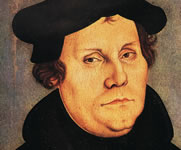Different Styles & Periods
- In the beginning was the castle
- A declaration of love to antiquity
- From Renaissance to Romanticism
- Baroque centre of culture and enlightenment
- Baroque magnificence
- Baroque gardens in the north
- Palatine baroque and Francophile elegance
- Late-baroque treasure troves
- Baroque to Biedermeier in Berlin and Brandenburg
- The Golden Age of Classicism
- Jewels of historicism
- Neo-Gothic romanticism
Contact
Late-baroque treasure troves
Between 1735 and 1790 the art-historical style known as baroque developed into rococo (also known as late baroque). The heavy, monumental dynamism of the baroque was replaced by cultivated living, lightness, subtlety, exquisitely tender sensuality and gallant forms of expression. Rococo style is characterised by exuberant embellishment on buildings, interiors, furniture, objects and, above all, the rejection of all kinds of symmetry, which had been an important component of baroque style. The term rococo also refers to the transition from baroque to classicism, in particular the turning away from lavish floridity to clarity of line. However, no other era witnessed a greater contrast between illusion and reality, appearance and truth.
Ludwigslust Palace
Show on map »
Blankenburg Castle & Garden
Show on map »
Hundisburg Palace
Show on map »
Neuzelle Abbey Garden
Show on map »
Travel Planner
Select an option...
Location
- Ludwigslust Palace
- Blankenburg Castle & Garden
- Hundisburg Palace
- Neuzelle Abbey Garden






